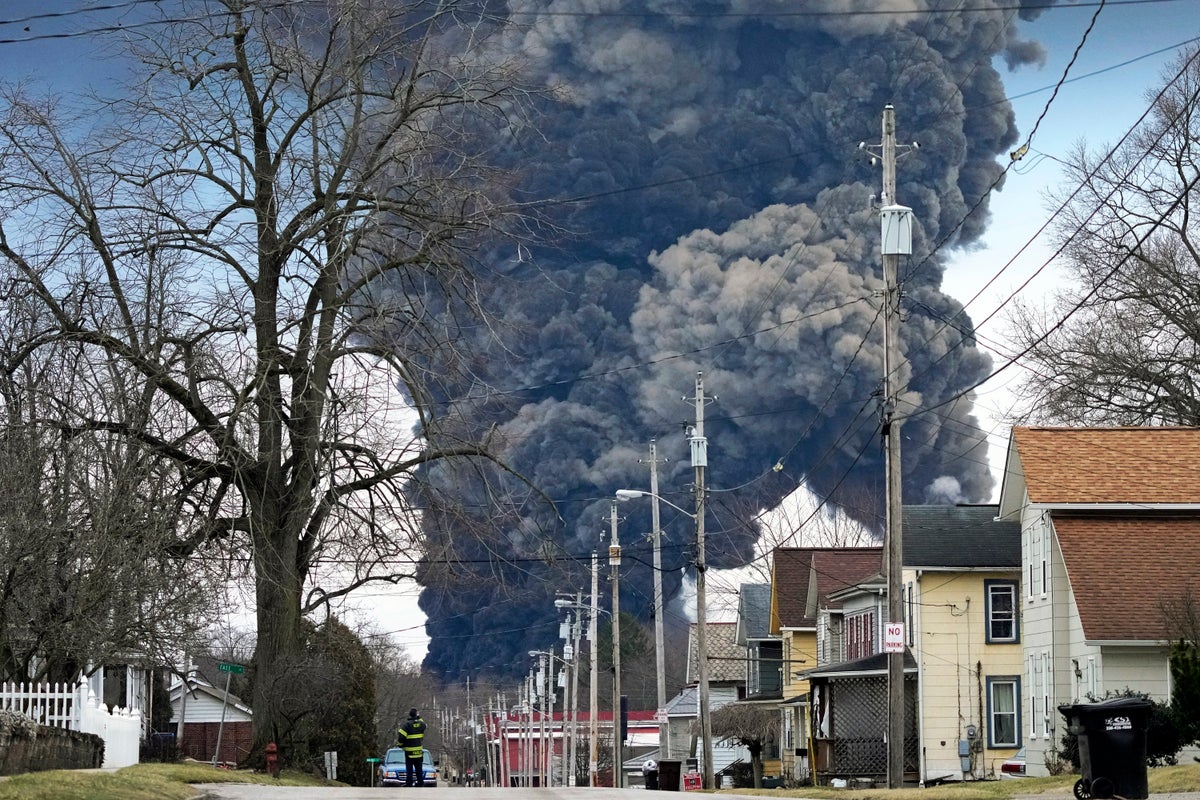
A federal judge has signed off on the $600 million class action settlement over last year's disastrous Norfolk Southern derailment in eastern Ohio, but many people who live near East Palestine are still wondering how much they will end up with out of the deal.
Preliminary approval for the settlement came late Tuesday, so now lawyers involved in the case will return to the community to answer more questions about the deal Atlanta-based Norfolk Southern agreed to this spring.
One of the lead attorneys for the plaintiffs, Mike Morgan, said the settlement will resolve claims against the railroad and other defendants in the lawsuit, such as the rail car owners and chemical manufacturer that made the vinyl chloride released and burned after the derailment.
But Morgan said this deal won't affect possible future lawsuits against the Environmental Protection Agency, which is overseeing the cleanup, or any other government entity. Those agencies weren't defendants in this lawsuit, but there has been significant confusion because broad language in the fine print of the agreement mentions that “governmental agencies, entities, and authorities, whether federal, state, county, or local, their employees, officers, agents, members, and volunteers” are among the released parties.
“Our pitch to the community is please give us time to explain why we think this is fair,” Morgan said.
Morgan said that language is designed to make sure all of the subcontractors who have worked for the railroad in the aftermath of the derailment are covered — not prevent lawsuits against the government, which might be difficult to pursue anyway because of limits on government liability.
“I just don’t understand why they’re trying to make us sign away rights that we have,” said Jami Wallace, who left her home after the derailment.
Pending lawsuits filed by the EPA and Ohio against the railroad aren't affected by the settlement.
The agreement is designed to address all damage claims against the companies within a 20-mile (32-kilometer) radius of the derailment and, for residents who choose to participate, personal injury claims within a 10-mile (16-kilometer) radius of the derailment.
But the lawyers involved say there is no way at this point to address potential future health costs if someone were to develop cancer down the road under appellate court rulings in the region. Residents can decide to accept money for property damage without taking the personal injury payment.
Fears about the potential long-term health implications of the chemical exposure after the crash are a major concern for the community. Many people are still reporting respiratory problems, unexplained rashes and other symptoms more than a year after the derailment while others have no health complaints.
The amount people receive from the settlement will vary based on how close they lived to the derailment and how it affected them. Documents filed in court suggests that a family living within 2 miles (3.2 kilometers) of the derailment might receive only $70,000 for property damage and another $10,000 for injuries. Someone who lived farther away will get considerably less — maybe only $250 for families more than 15 miles (24 kilometers) away.
Many residents question whether the deal will provide enough compensation once the money is divided up.
But Morgan said the ultimate amount families receive could be significantly larger once a claims administrator considers individual factors.
The attorneys are expected to receive up to $162 million in legal fees out of the settlement if the judge approves.
The final amount residents receive will be affected by how much assistance they took from Norfolk Southern, which provided $21.4 million in direct assistance to families who had to temporarily relocate after the derailment. The amount families received from the railroad will be deducted from the settlement they get, but that money won't be refunded to Norfolk Southern. Instead, the money will be returned to the settlement fund to be distributed to the community.
A dedicated claims center to help people request their share of the settlement will open in East Palestine now that the agreement has received preliminary approval, and the lawyers plan to hold more community meetings.
Residents who don't think the settlement provides enough have until July 1 to opt out of the deal and preserve their right to file an individual lawsuit later. That means they will have time to read the National Transportation Safety Board's final report on the derailment that will be released at a June 25 hearing in East Palestine. Previously, the proposed opt-out deadline was the day before that hearing.
The NTSB has said that the crash was likely caused by an overheating bearing on one of the cars on the train that wasn't detected soon enough by the network of detectors the railroad has alongside the tracks.
The head of the NTSB also said that the five tank cars filled with vinyl chloride didn't need to be blown open to prevent an explosion because they were actually starting to cool off even though the fire continued to burn around them.







